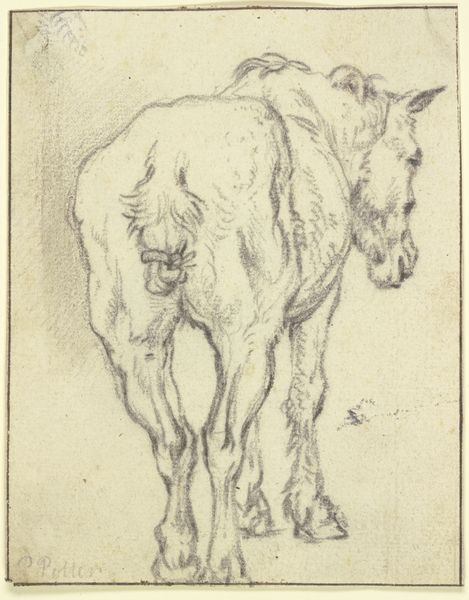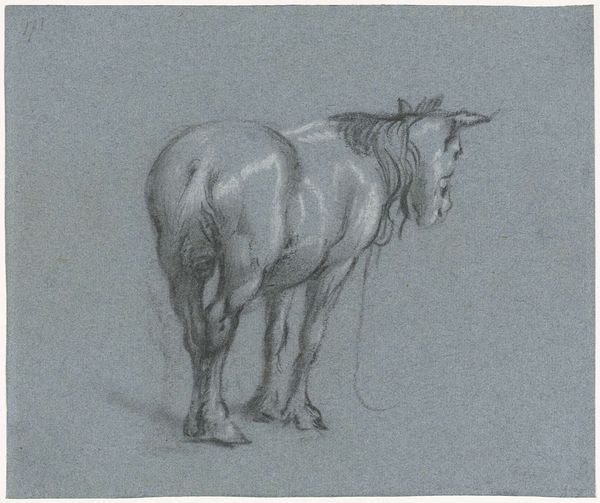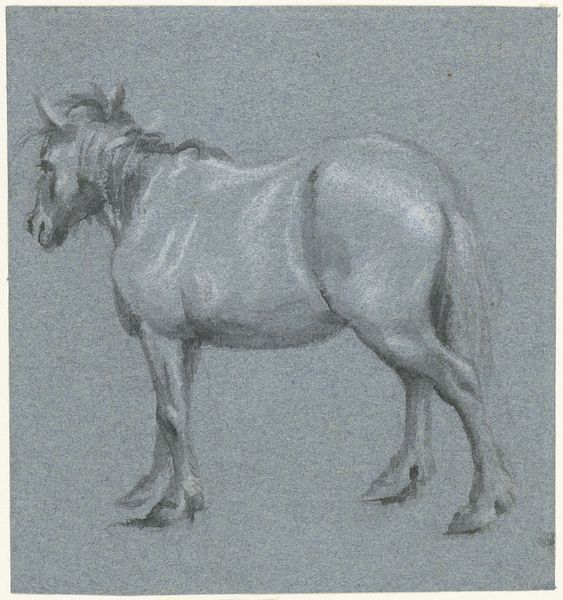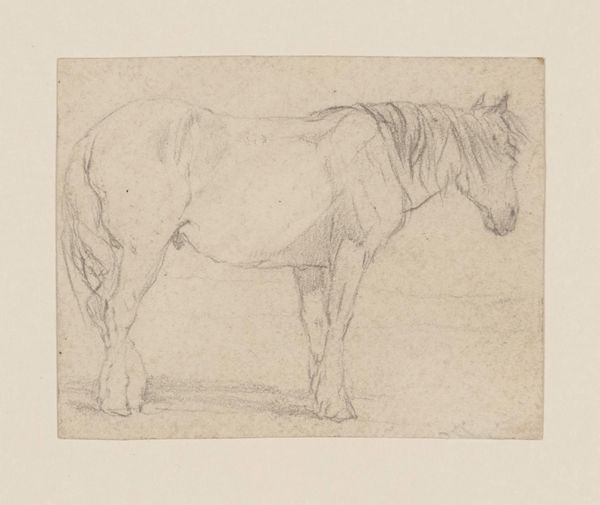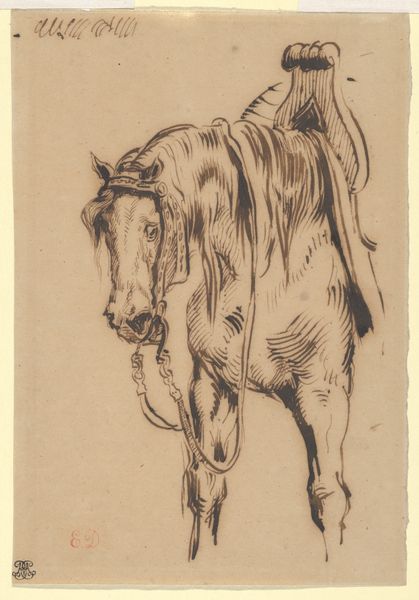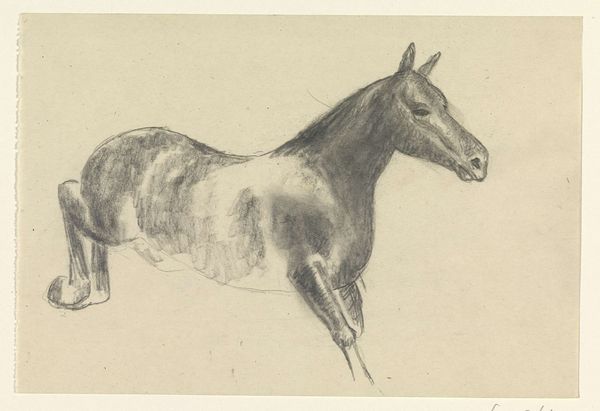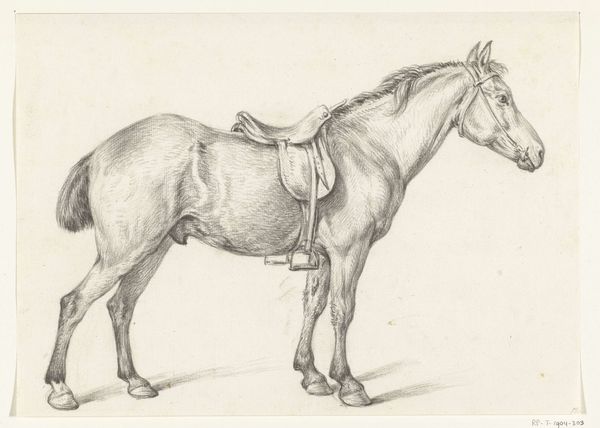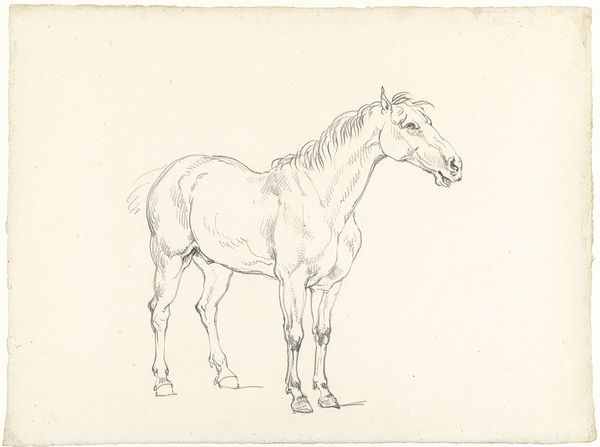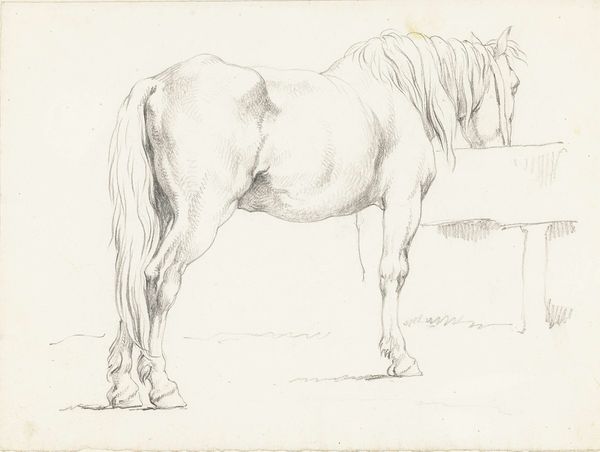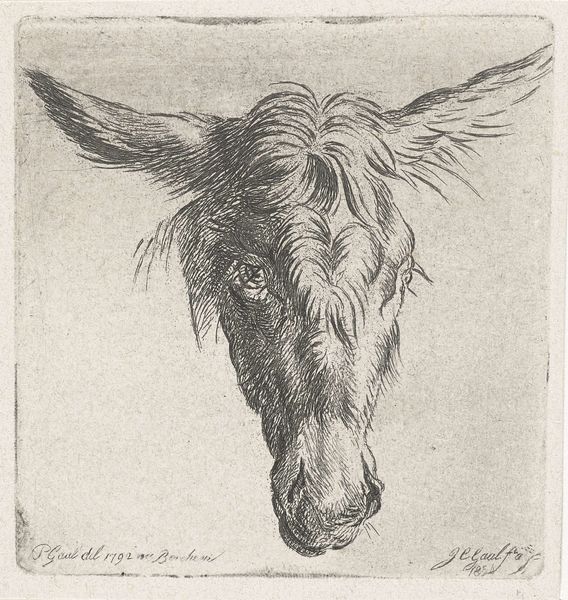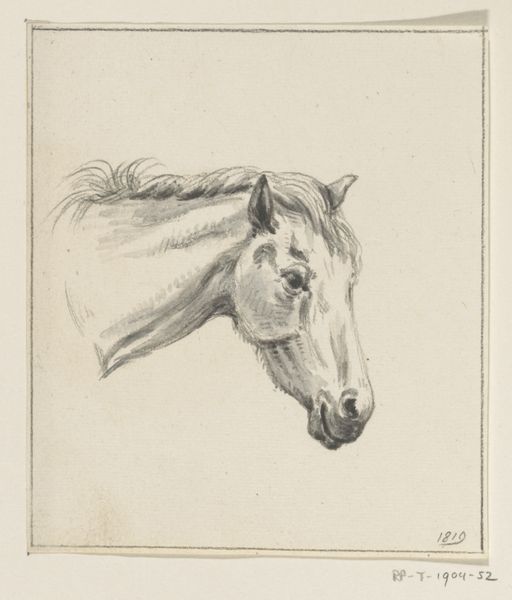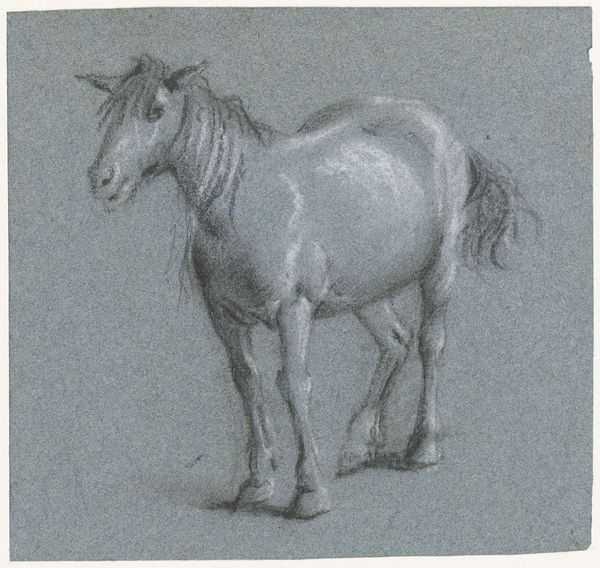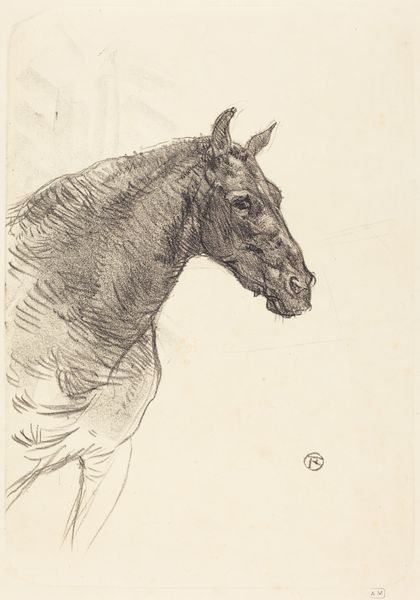
#
pencil drawn
#
light pencil work
#
pencil sketch
#
caricature
#
charcoal drawing
#
pencil drawing
#
horse
#
surrealism
#
animal drawing portrait
#
portrait drawing
#
pencil work
Dimensions: height 209 mm, width 141 mm
Copyright: Rijks Museum: Open Domain
Curator: Here we have Pieter van Bloemen’s "Standing Horse, Viewed from the Back and at an Angle to the Right," a pencil drawing created sometime between 1667 and 1720, now housed at the Rijksmuseum. Editor: My first impression is one of quiet observation. The somber pencil work captures a certain heaviness in the horse's posture. There’s a distinct lack of dynamism that’s interesting to me. Curator: I agree, and that feeling might be related to the specific symbolic weight of the horse itself in art. Horses are often seen as symbols of power, freedom, or even war, but in this case, that symbolic charge is clearly subdued by its more humble posture and simple depiction. It makes me think of the selective muting of previously potent imagery. Editor: Precisely. Think of how, for marginalized people throughout history, access to horses and the symbolic power associated with them was strictly regulated or denied. The drawing, therefore, perhaps subtly mirrors these unequal power dynamics and brings those unspoken power narratives to light. Curator: That’s a very astute point. The horse, though a universal symbol, clearly operates within a specific historical and cultural framework that dictates its meaning, its utility, and even the emotions it can evoke. Van Bloemen focuses on the animal's sheer physical presence while perhaps inviting the viewer to bring in cultural assumptions, which you aptly identified. Editor: It’s fascinating to think about. What does it mean to depict this iconic creature with such a visible awareness of class, race, and ability? It shifts our interpretation. Curator: Perhaps this piece reveals the layered psychological meanings behind our common association with the horse, urging the viewer to reconcile the animal's natural presence with a constructed sense of dominance, access, and power. Editor: It is the conversation around its construction that holds power today. This piece really embodies the old adage that the most powerful images are those that demand we consider what isn't being said or shown, rather than just what's on the surface. Curator: Indeed, and in recognizing what isn’t seen, we see the power of art to reveal hidden stories and provoke important dialogues about historical inequalities.
Comments
No comments
Be the first to comment and join the conversation on the ultimate creative platform.
